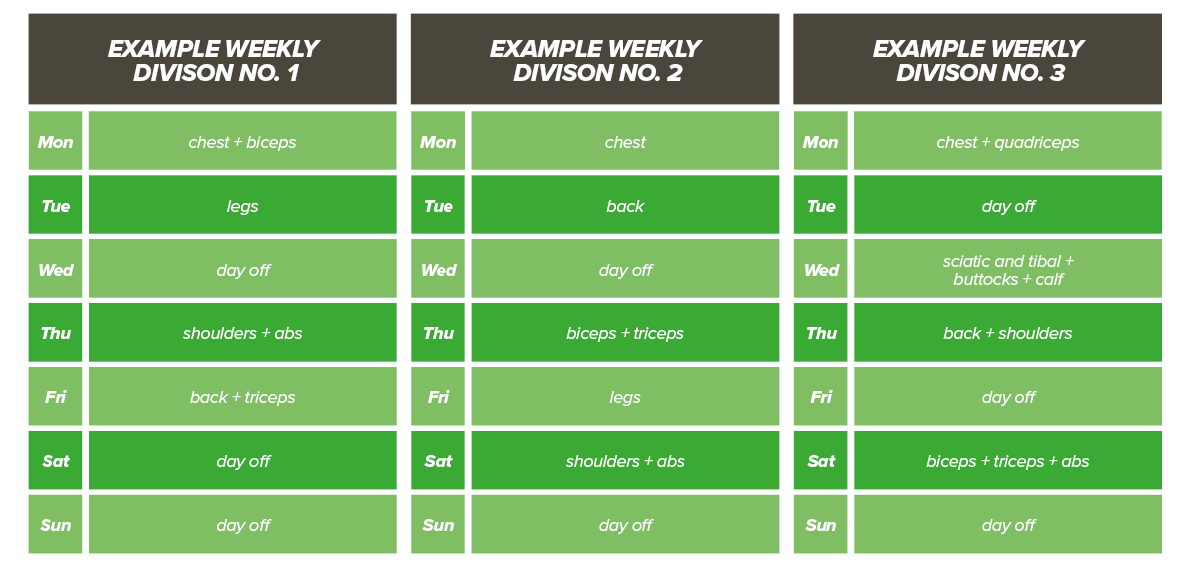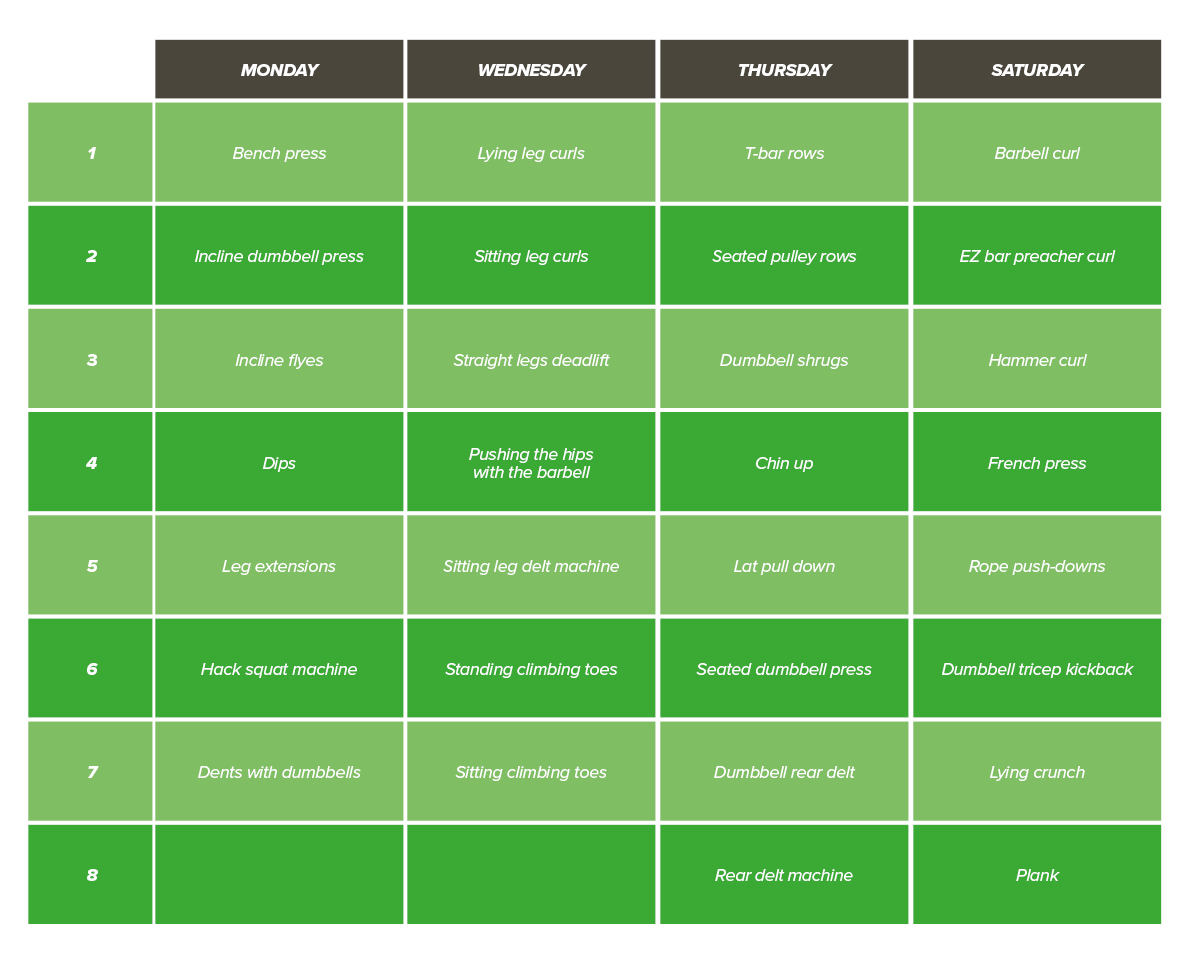SPLIT is the name of one of the most popular gym training strategies. In the fit-community there is a belief that if you do not do split training then you must be beginner. This is not entirely true. Like any training philosophy, this one also has its pros and cons. In this article, I will try to present them clearly. I will teach you how to create your own plans and I will prepare ready-made schemes.
Basic assumptions
Split is characterized above all by the fact that each training unit is dedicated to a specific part / body parts. In contrast to FBW (Full Body Workout), we choose one, two or three parts and focus on them all of our time that day. For example, in eight exercises, we include movements involving only the chest and biceps. This approach allows you to maximize congestion of one muscle for a long time which is one of the conditions of hypertrophy (muscle growth). Thanks to this approach, you can also set priorities (what we want to improve in our figure) and focus more on them. It is possible to arrange a plan so that the priority party can be worked twice a week, which intensifies the effect. Thanks to the division into parties, you can train 6 times a week or even every day! However, most often the training is arranged in such a way that each muscle part is reworked ONCE a week. This works on the minus of this program because in FBW training, each part is stimulated three times a week.

Split training is not dedicated to beginners, but it does not mean that advanced people base their development only on this method. Organisms of people starting trainings are not adapted to the level of intensity characterizing split. Execution of 4 exercises for one muscle party requires an already established strength and strength base. Muscle soreness the next day would be unbearable for an amateur. Beginners do not know many exercises, which means that performing 4 different bicep exercises can be quite a challenge in this matter. Following the FBW scheme at the beginning allows you to master basic exercises and allows you to work in depth on the technique. When basics such as breathing, movement patterns, tempo and others are mastered, then you can move on to more complex exercises.
Planning training
Muscle parties of our body, going from the top, are divided into: shoulders, chest, back, biceps, triceps, abdomen, buttocks, quadriceps, sciatic and tibal, thigh, calf. Leg muscles are most often treated as one party, although this should not be the case. So we have a division into 7 parties, which means that if we want to train each one separately, we have to go to the gym every day. Not many of us live and breathe training and have time for it, so often two or even three parts of the body are combined in one session. It should be remembered that when training one party, other muscles may be involved to help. The plan should be arranged in such a way as to ensure enough time for rest to regenerate. An example is the activity of triceps when training the chest or biceps at the back muscles.

We are now going to the next stage of the construction of our training plan, which is the selection of exercises. By doing one muscle party, e.g. chest, we will never do more than 5 exercises. If we do two parties (large and small), e.g. back and biceps there are two solutions. The first one is max 5 exercises (better 4) for a large muscle part (back) + max 3 for a small part (biceps). Eventually, advanced people can risk a 4/4 split. Such training should always take us no more than 60 minutes while maintaining the appropriate intensity and not wasting time. We choose exercises in a way that they are as diverse as possible. Thanks to each of them, the given party will work from a different angle, which will provide our muscles with various stimuli for growth. Therefore, the range of exercises in split training should be as wide as possible. It is worth consulting the plan with an experienced trainer.
An example of how to choose the appropriate exercises will be the above-mentioned weekly division number 3.

The number of series and reps will fluctuate in the ranges of 3/4 x 8/12. It all depends on the trainee's individual characteristics, current training goal and priorities. Breaks between series - 1 min. Remember about the proper technique of doing exercises. Do not just think about weight. The weight is important, but only if the technique is correct. Otherwise, you may get injured which may stop you from training.
Conclusions
If thanks to this article you have learned to build a split workout, you have at least six months of experience in the gym, you know the basics and you want to further develop your figure, there is nothing to prevent trying this training method. First of all, it will introduce a breath of freshness to your training routine, increase motivation, and new, previously unused exercises will be a shock for the muscles which will cause their further development. Let the strength be with you!





